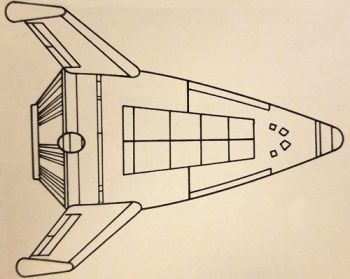Difference between revisions of "Lindbergh class (FASA)"
From Trekipedia
m |
|||
| Line 59: | Line 59: | ||
[[Category:Library]] | [[Category:Library]] | ||
[[Category:Ships & Vehicles]] | [[Category:Ships & Vehicles]] | ||
| + | [[Category:Ship Classes]] | ||
[[Category:Human Vessels]] | [[Category:Human Vessels]] | ||
[[Category:Games]] | [[Category:Games]] | ||
Revision as of 22:12, 2 August 2019
FASA Timeline

Lindbergh class (SFC)
The Lindbergh class space ferry was launched in 2003, filling the role of the old Space Shuttle as the primary surface-to-orbit spacecraft. Early versions of the Lindbergh class were equipped with booster rockets, much like the Shuttle, but advances in early 21st century technology eventually eliminated the need them; the class was also equipped with eight cargo ports per side, for ready cargo access. The Lindbergh class played a vital role in the completion of the Orbital Power Satellite network, which guaranteed energy independence for Earth, as well as in the construction of orbiting satellite cities.[1]
Specifications
| Length | 61m |
| Beam | 51m |
| Mass | 2.5 million kg |
| Payload Bay | 10,000m³ |
| Maximum Payload | 1,000,000kg |
| Crew | 6 |
| Passengers | 125 |
Performance
| Velocity | 11,000m/second (Earth escape) |
| Range | Orbital to circumlunar |
| Landing/Takeoff | Horizontal Takeoff and Landing (HTOL) |
| Engines | Chemical Boost Single Stage to Orbit (SSTO) |
| Engine Configuration | Aerospike Plug nozzle with 24 coordinated small engines for greater efficiency and reliability |
References
- ↑ Goldstein, Stan and Goldstein, Fred with Sternbach, Rick. Star Trek: Spaceflight Chronology. Pocket Books, 1980.